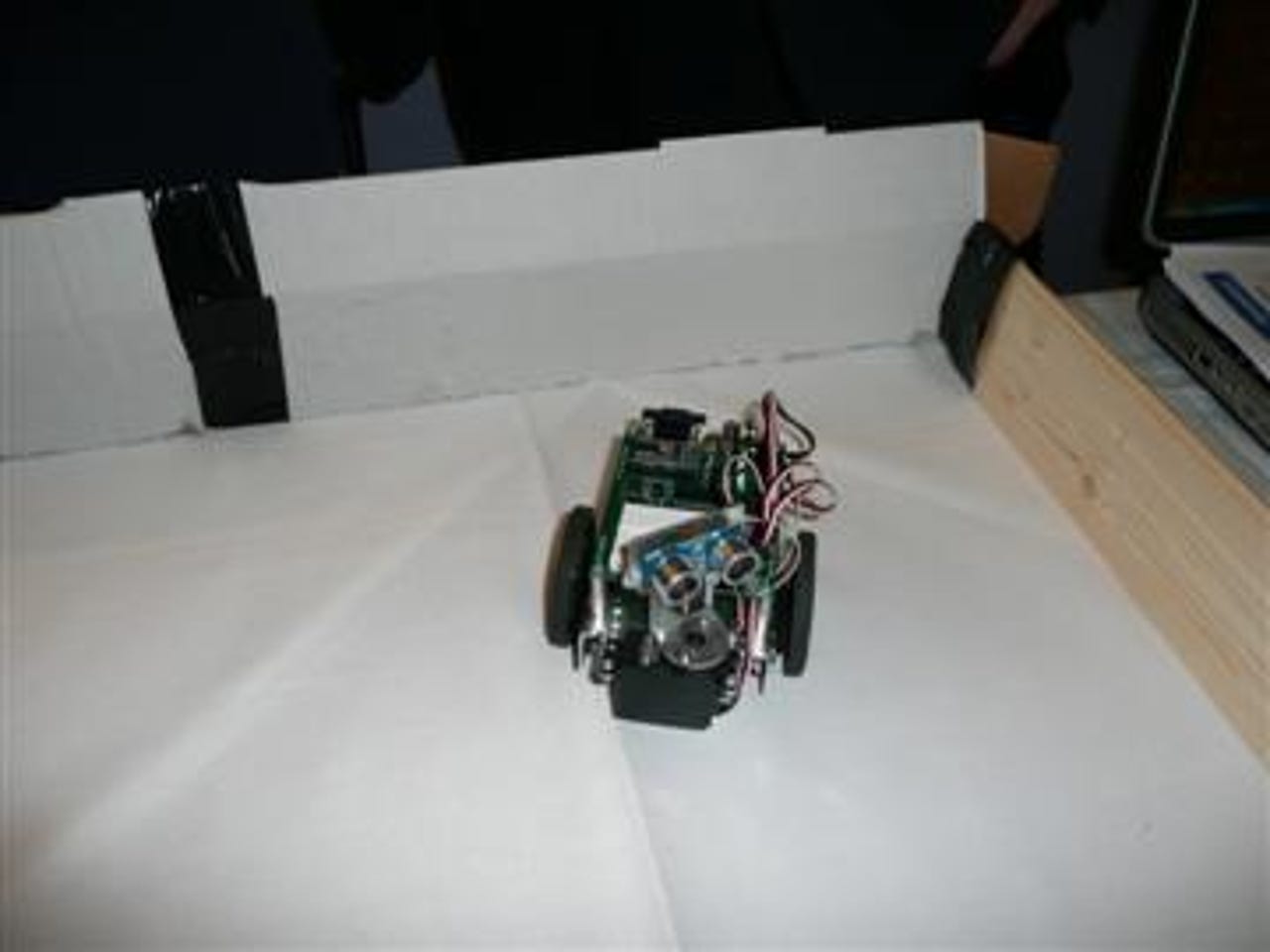Photos: Robot warriors engage in battle


MoD lays down the surveillance challenge
The Grand Challenge is a science and technology competition set up by the Ministry of Defence to address military challenges faced by the UK armed forces. The challenge is to create a system with a high degree of autonomy that can detect, identify, locate and report a comprehensive range of military threats.
Eleven teams have been selected to go through to the final which includes a physical demonstration at Copehill Down, a specially constructed village built for urban warfare training, in August.
The Mindsheet team have developed sensory systems to negotiate the debris of urban terrains. What the unit sees is what its operator will see, although the unit will automatically travel through a set series of waypoints, leaving the operator free to assess what they see through the robot's eyes.
The Mindsheet team's entry is centred around a radio-controlled buggy that is carried to battle on a soldier's back. That means if there is a potential hazard, the unit can be deployed immediately.
Stellar Research has designed a system that relies on three separate autonomous platforms - an Unmanned Ground Vehicle, up to six medium-height Unmanned Aerial Vehicles (UAV) and one high-level UAV.
Together, they can be used to map and assess the battlefield at macro and micro levels. Current technologies only give battlefield data down to 500m. This system is designed to close that 500m gap
The Thales team entry is also centred around aerial and ground units working in tandem. Here, the aerial unit will fly a set flight path, identifying potential threats and direct the ground vehicle to that location for a closer inspection.
The aerial unit carries daylight and thermal imaging sensors and a laser range finder to record information on the conditions of the ground and the distance to potential threats.
Dr Joseph Barnard of the Barnard Microsystems team models a virtual reality headset and wireless controller that is being used in its entry.
Alongside ultrasound, light detection and ranging technologies, the aerial unit in this entry will carry a camera that streams near-real-time imagery to the operator, who can direct the angle of the camera with just head movement.
Team Barnard Microsystems - like the majority of the other teams - is combining off-the-shelf components as platforms for bespoke auto navigation and sensory systems. Radio-controlled toys are relatively cheap, sturdy and light enough to provide viable prototypes.
Team I-Spy is one of the few that is developing its own unit from scratch.
This multi-rotored UAV is designed with weight overhead and durability in mind. This unit weighs around 3kg. It's small and compact, which would please any soldier saddled with the task of carrying it into the battlefield.
While many teams have opted for large, durable units (the biggest entry is the size of a small car), Team Locust, from Ant Scientific and Portsmouth University, has gone the opposite way and opted for miniaturisation.
Even the control component of this entry has been chosen with portability in mind. A handheld PC is used to program the UAVs with waypoints and threat detection is performed by the operator.
Here, Ant Scientific R&D director, Rob Mullins, is demonstrating how the PC can be used to input commands on the right or show a GPS-enabled map of the area.
Team Locust's UAV is tiny in comparison to other entries. It is made of cheap polystyrene which may not be very durable but it is ultra-light, making it possible for a team of soldiers to carry many units.
The UAV is capable of carrying a range of micro and nano sensors and uses a four-band radio transmitter about half the size of a postage stamp.
The prop motors that drive the UAV are also tiny. About half the size of a fountain pen ink cartridge.
Team Locust's entry is focused around micro sensory devices. The picture here shows a tiny tremor sensor, not much bigger than a 10p piece, that sends an alarm signal if it is disturbed.
It's a simple rather unsophisticated device but many of these sensors can be carried onto the battlefield and dropped all over it, to give the soldiers in the area a powerful early-warning system if enemy troops move in.